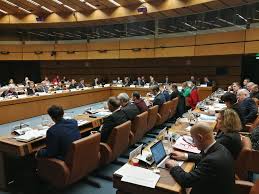- Courses
- GS Full Course 1 Year
- GS Full Course 2 Year
- GS Full Course 3 Year
- GS Full Course Till Selection
- CSAT
- 5 LAYERED ARJUNA Mentorship
- Public Administration Optional
- Online Program
- GS Recorded Course
- NCERT Batch
- Polity Module Course
- Geography Module Course
- Economy Module Course
- AMAC Module Course
- Modern India, Post Independence & World History Module Course
- Environment Module Course
- Governance Module Course
- Science & Tech. Module Course
- International Relations and Internal Security Module Course
- Disaster Management Module Course
- Ethics Module Course
- Essay Module Course
- Current Affairs Module Course
- ABOUT US
- OUR TOPPERS
- TEST SERIES
- FREE STUDY MATERIAL
- VIDEOS
- CONTACT US
Asymmetric Federalism
Asymmetric Federalism
Context:
- The concept of Asymmetric Federalism has gained attention due to the recent Supreme Court judgment regarding Article 370.
What is Federalism?
- Federalism divides governmental powers between a central authority (federal government) and smaller, regional units (states, provinces, etc.). This separation ensures that neither level of government has complete control over the other.
What is Asymmetric Federalism?
- Asymmetric federalism means that different parts of a country have different levels of power or self-rule within the overall government system.
- It includes differences in political, administrative, and fiscal arrangements between the various units in a federation.
- This inequality can exist both vertically (between the federal government and regional units) and horizontally (among the regional units themselves).
Vertical Asymmetric Federalism:
|
Vertical Asymmetry |
Imbalance in power between Centre (Union) and States in Indian federal structure. |
|
Article 3 |
Grants Centre unilateral authority to propose changes in state’s names and boundaries without state’s consent. |
|
Article 352 & 356 |
Article 352 deals with National Emergency providing centralizing powers to Centre. Article 356 allows President's rule in states under certain circumstances. |
|
Article 248 |
Grants Parliament residuary powers of legislation, exclusive to the Centre, beyond State or Concurrent Lists. |
Horizontal Asymmetric Federalism:
|
Horizontal Asymmetry |
Disparities among states in India's federal structure, reflecting varying levels of representation and autonomy. |
|
Schedule 4 |
Unequal representation in the Rajya Sabha (Upper House). Example: Uttar Pradesh (31 seats) vs. Arunachal Pradesh (1 seat). |
|
Part VIII |
Deals with provisions related to Union Territories (UTs), having distinct federal arrangements different from states. |
|
Schedule 5 |
Administers Scheduled Areas and Tribes in states, excluding Assam, Meghalaya, Tripura, and Mizoram. |
|
Schedule 6 |
Governs tribal areas in Assam, Meghalaya, Tripura, and Mizoram, enabling the creation of autonomous districts and regions. |
|
Article 371 & others |
Articles 371A to 371J provide special provisions for specific states (e.g., Maharashtra, Gujarat, Nagaland) for unique governance needs. |



